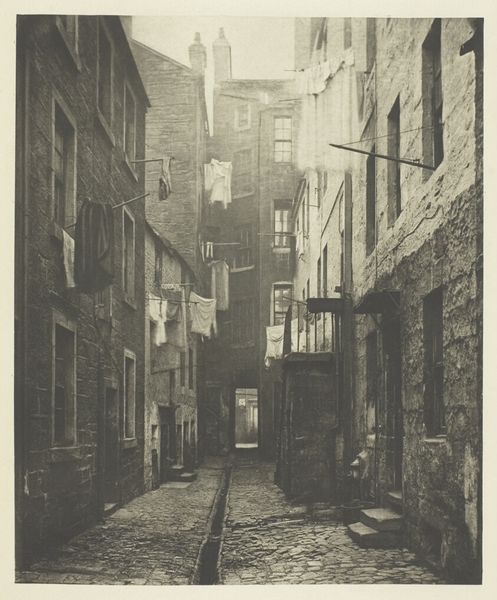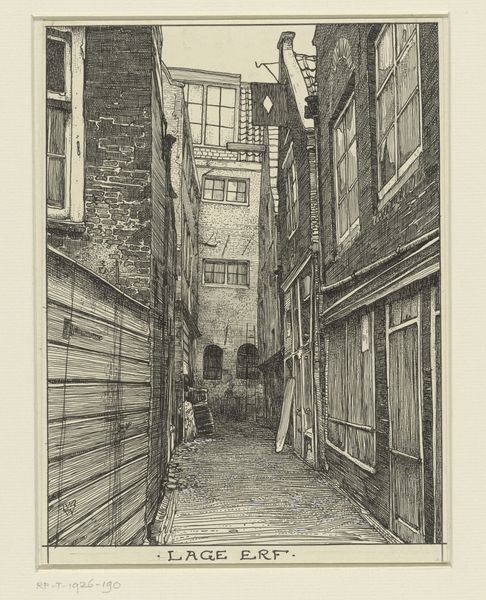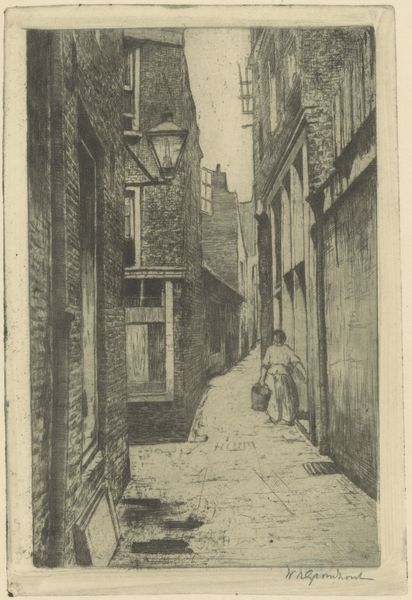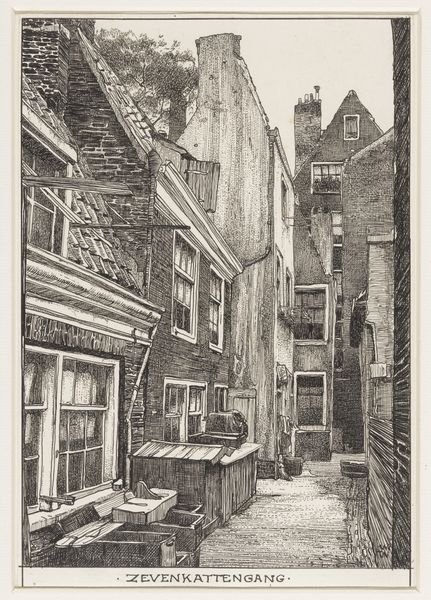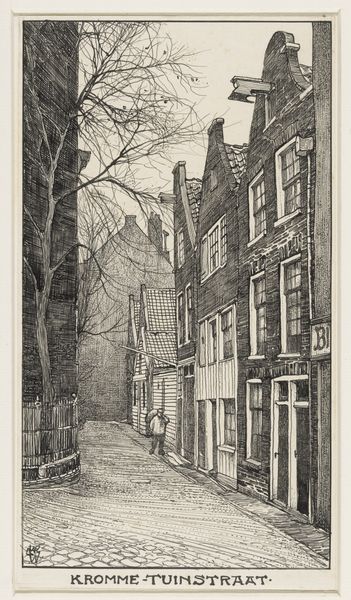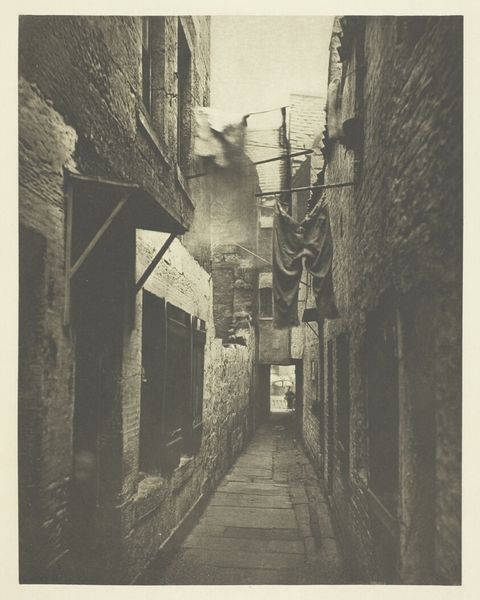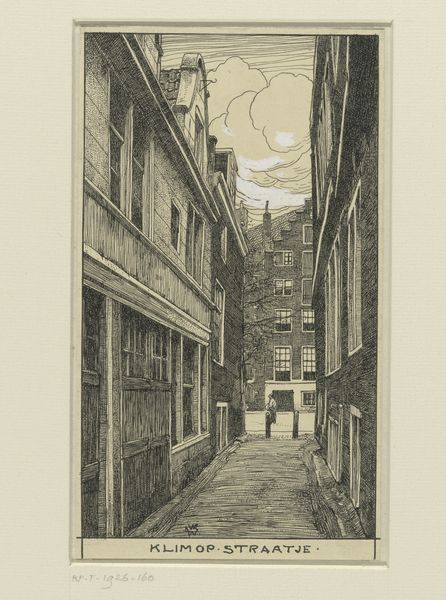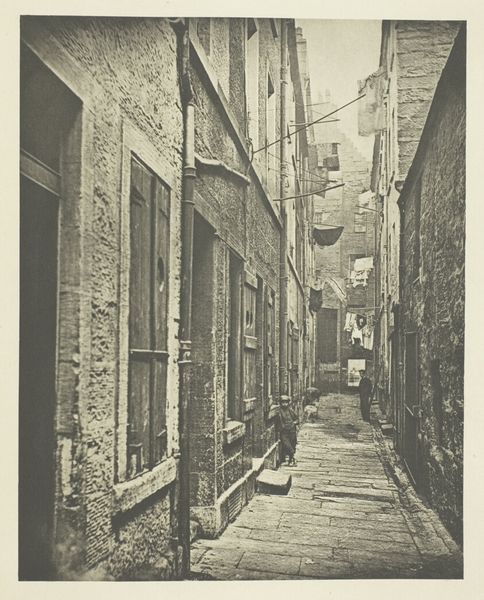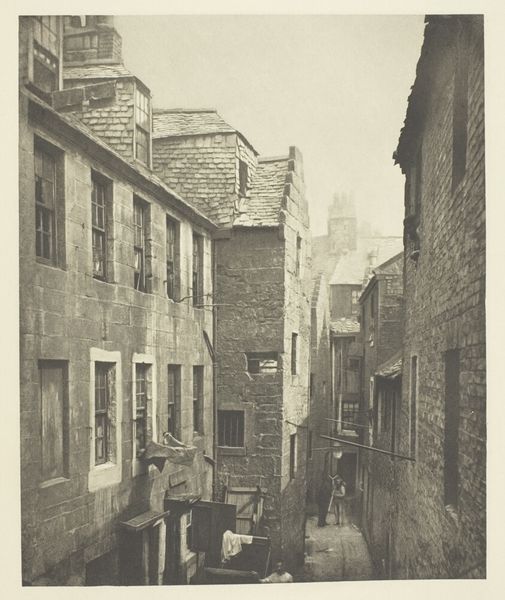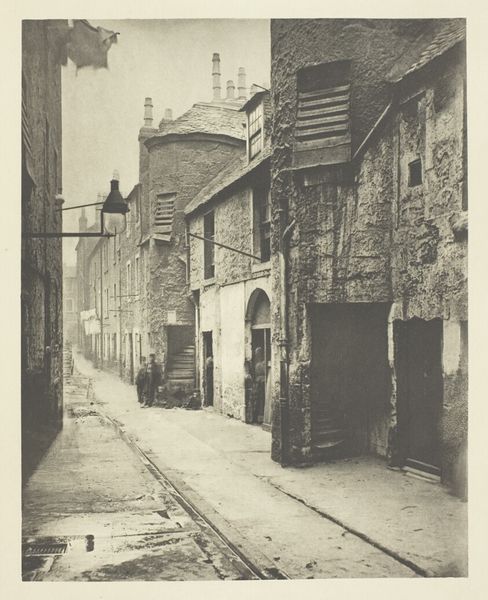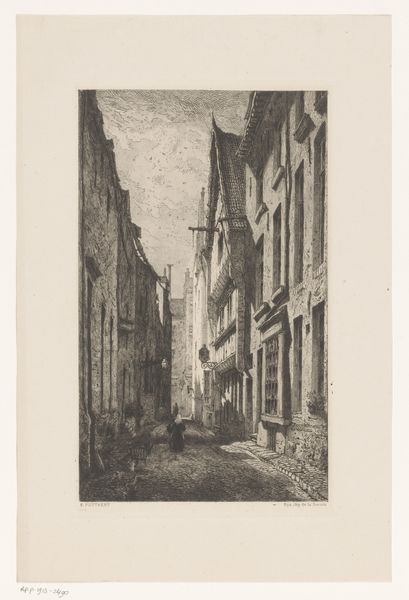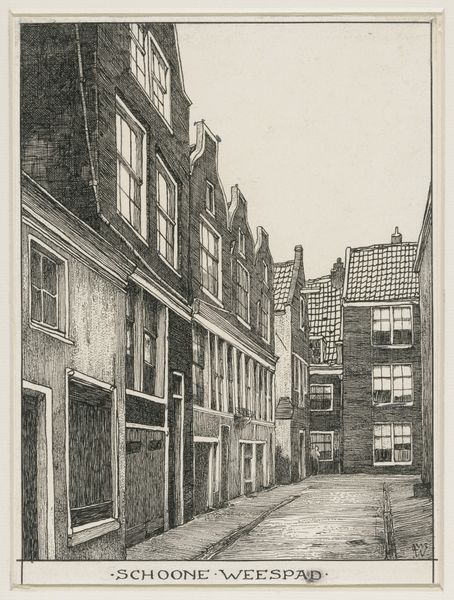
drawing, print, etching, ink
#
drawing
#
comic strip sketch
#
aged paper
# print
#
etching
#
pencil sketch
#
old engraving style
#
sketch book
#
personal sketchbook
#
ink
#
sketchwork
#
pen-ink sketch
#
sketchbook drawing
#
cityscape
#
storyboard and sketchbook work
#
realism
Dimensions: height 201 mm, width 135 mm
Copyright: Rijks Museum: Open Domain
Curator: What a captivating etching! This is "De Onkel Boeren Steeg te Amsterdam," created by Willem Wenckebach between 1870 and 1926, now held at the Rijksmuseum. Editor: It’s…claustrophobic, almost oppressive. The dense lines of the etching really emphasize the narrowness of the alley. There's such a contrast of dark and light here. Curator: That dense line work is crucial to its symbolic power. Notice how Wenckebach uses the tightly packed lines to create a feeling of enclosure, hinting at the restrictions and confinements that city dwellers, especially the working class, often faced. This street becomes a metaphor for societal constraints. Editor: I am more struck by the sheer labor it represents! All those individual lines etched, the precision. You can almost feel the repetitive motion of the artist. Think of the materials – the etching plate itself, the inks used… all carefully chosen to yield this texture, and a subtle, somewhat worn quality. Curator: Consider the symbolism of the star above the door, barely noticeable. A five-pointed star like that is often associated with guidance and protection, yet here it seems almost swallowed by the looming brickwork. A potent visual paradox. The star feels more decorative here than symbolic, like a faded memory, and the very depiction of a narrow passage like this brings into sharp focus urban poverty from that era. The boarded-up buildings also evoke ideas of poverty. Editor: Exactly! It's this material reality, represented with meticulous detail, that underscores any deeper meaning. It's not just poverty, it’s about the physical impact of that poverty on people’s everyday existence: what does it *feel* like to walk in such a space? I think the emphasis here is less the symbol itself and more the physical conditions. Curator: I concede that both readings can coexist! This work highlights how art becomes a vessel for memory. Looking at the image evokes feelings of the past, not only reminding people of Amsterdam's rich history but also serving as a reminder of themes like urban constraints, which affect cities even to this day. Editor: A great discussion, certainly demonstrating the multifaceted nature of visual art itself. It’s in pieces like this we find that materials and symbolic form fuse into social narrative.
Comments
No comments
Be the first to comment and join the conversation on the ultimate creative platform.

